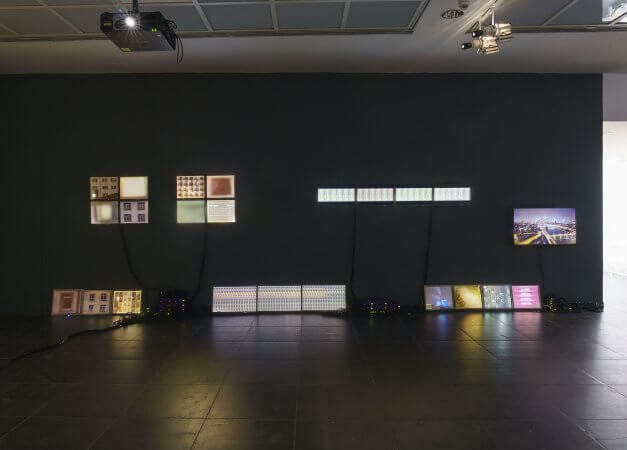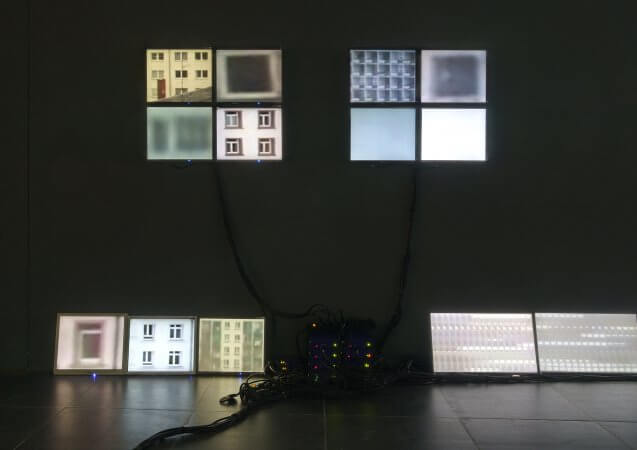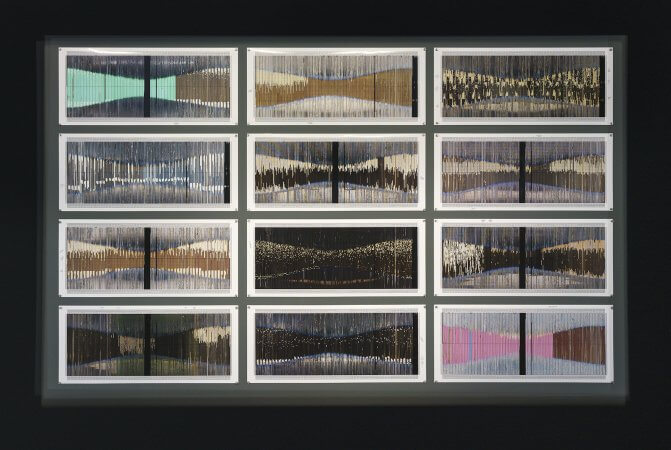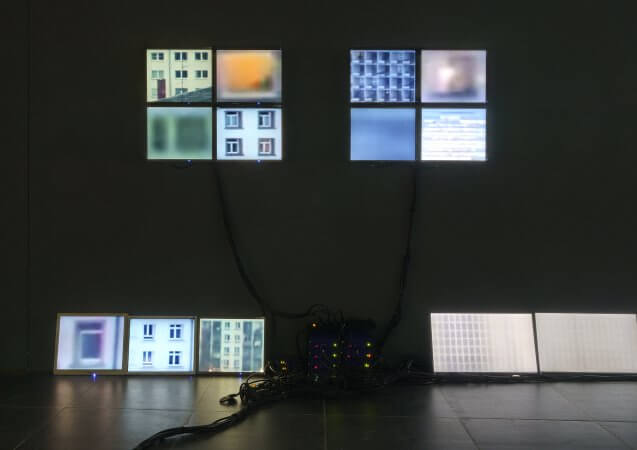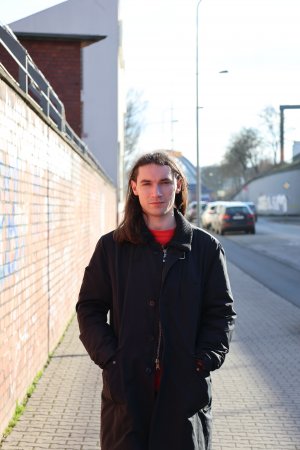Benedikt Ackermann
Filtered time series (Frankfurt), 2023
Installation
23 screens, 23 media players, switches, power supplies, network cables, video cables, power cables, adapters, Velcro
Filter #0 (F)
Filter #1 (F)
Filter #2 (F)
Filter #3 (F)
Filter #4 (F)
Filter #5 (F)
Filter #6 (F), 2023
Screen clusters
Annual Plots (Frankfurt), 2023
12 Inkjet prints on paper
Courtesy the artist
Benedikt Ackermann works conceptually, questioning the meaning of images in the digital age. His interest lies in the invisible shift in power that accompanies the ongoing development of digital technologies.
Ackermann has developed a complex spatial installation for the exhibition at the Frankfurter Kunstverein, comprising more than 20 monitors and a series of prints. The installation accesses the image material of a camera mounted on a Frankfurt skyscraper. Installed in the south of the city, it records the skyline and its surroundings. The data is archived online and can be retrieved there. Ackermann has downloaded the pictures the camera took every 5-10 minutes from 2021 to 2022. These images total more than 100,000.
He assembles them into a time-lapse recording, which he in turn crops so that often only highly pixelated videos remain. Some of these videos, those showing individual windows, he uses as the basis for a series of inkjet prints, images somewhere between a digital contact print and a diagram. Where exactly the windows are, he deliberately leaves unclear. He sorts all the frames of a year into a coordinate-based system of day and time, thus revealing the daily routines of people who live and work behind each window. He writes down observations on the edges: when people get up or when they are on holiday, when they start working and when they stop again. In a fascinating yet comprehensible way, Ackermann reinterprets the images as data and the camera as a measuring instrument.
Beyond that, his pictures have a painterly quality. For the apparent rationality of the material loses its contours and becomes flowing, implied forms, behind which we recognise the coming-into-being and elapsing of human existences, as well as the infinite circularity of everyday life. The temporality of all things, making the individual recede as a replaceable part behind the machinery of the city. Recurring sequences of day and night, of summer and winter, mirrored in the glass towers of the financial world, behind which light and shadow offer us a glimpse of people’s stories.
Ackermann examines the images not as individual works created by an individual author, but as data, as a record. For today’s production of image information is created as bits, as information exchanged between computers, often no longer designed for a human viewer at all. Just consider the millions of surveillance cameras, whose images are increasingly analysed automatically, for example by facial recognition software. But the number of man-made images has also grown rapidly. Digital files, images, videos, sound are constantly produced and exchanged, copied, reproduced, whether by industry, the financial sector or private users. The global data throughput is constantly expanding. Computer centres have been turned into hubs of social power without questions being asked about who owns the data, who evaluates and uses it. The computer has made us a society of data collectors, and the sensors on our cameras busily assist in amassing this.
Benedikt Ackermann (*1994 in Frankfurt am Main, DE) works mainly with photography, video and digital media. Since 2019 he has been studying at the Hochschule für Bildende Künste – Städelschule in Frankfurt am Main (DE) with Prof. Gerard Byrne and Prof. Haegue Yang. Previously, he studied philosophy at the Goethe University Frankfurt am Main (DE). Among others, Benedikt Ackermann has exhibited at Museum Angewandte Kunst, Frankfurt am Main (DE) and at Goethe Institut, Dublin (IE).

